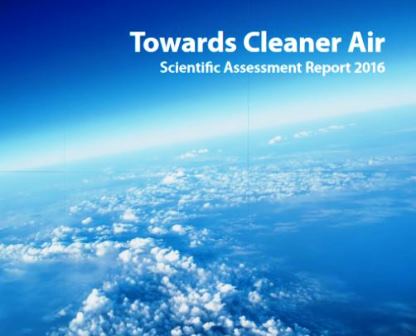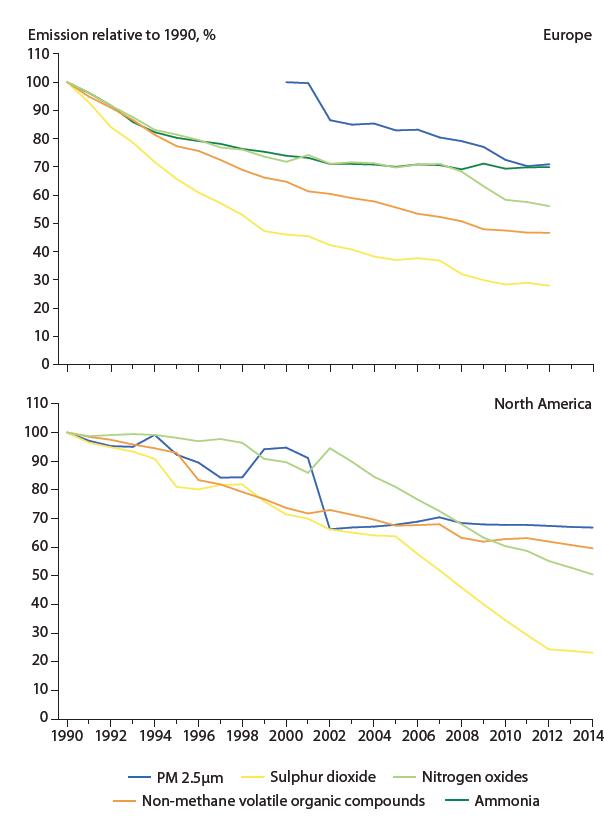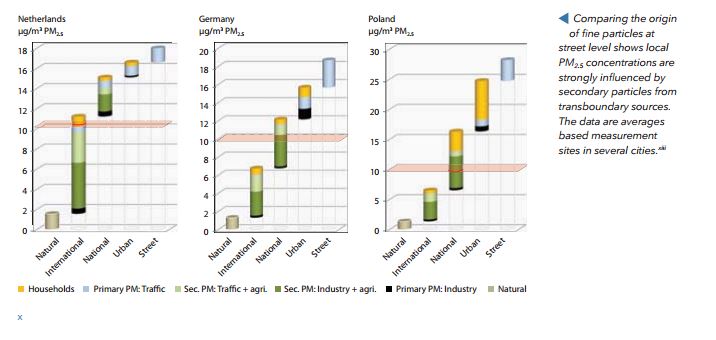
Air quality has improved significantly in North America and Europe over the past three decades, largely thanks to the UNECE Air Convention and EU air pollution policies. Average life expectancy in Europe has increased by one year and hundreds of thousands of premature deaths every year have been avoided as a result of policy-driven reductions in air pollution. In addition, soil acidification has been halted in most parts of Europe, and fish stocks are recovering in freshwaters where they had largely disappeared.
Despite these successes, air pollution is still the primary environmental cause of premature death in Europe, notably due to high concentrations of fine particles and ground-level ozone, and ecosystem biodiversity is threatened due to nitrogen deposition. These are the main findings of the report Towards Cleaner Air developed under the UNECE Convention on Long-range Transboundary Air Pollution (Air Convention), launched in Brussels today.
“Accrued efforts and international cooperation are needed to further improve air quality and limit its negative impacts on human health, ecosystems and the economy” said Anna Engleryd, Chair of the Executive Body for the UNECE Air Convention. “Specific action will be needed to abate ammonia emissions, which principally come from agriculture. Abatement options will need to include reducing livestock densities in and around sensitive nature areas and encouraging low-meat diets.”
“This report shows that solutions are at hand and that action pays off. Implementing the protocols under the Air Convention could not only significantly reduce air pollution but also enable an international level playing field for industries and prevent countries from competing with each other at the expense of the environment and human health” said UNECE Executive Secretary Christian Friis Bach. “I call on all governments to take appropriate action, starting at the Environment for Europe ministerial conference next week in Georgia”.
The report launch comes just weeks before the final round of EU negotiations on the revision of the National Emission Ceilings (NEC) Directive, which aims at establishing more stringent emission reduction commitments for the EU.
Sharp reductions in emissions and concentrations
Joint efforts by countries under the UNECE Air Convention and in the EU have resulted in significant successes:
- There has been a sharp decline in the emissions of major pollutants (see Figure 1).
- Particulate matter concentrations at European measurement sites declined by around a third between 2000 and 2012. National average annual concentrations of PM2.5 fell by 33% between 2000 and 2012 in the United States of America, and by 4% in Canada.
- The number of days exceeding the WHO guideline level for ozone concentrations is now about 20 per cent lower than in 1990.
- Without any policy measures, acidification of forests and lakes would have been 30 times larger than today. Instead, the area threatened by acidification was reduced by more than 90%.
Decoupling of growth and air pollution
Economic growth and trends in air pollution have progressively been decoupled. In Western Europe, environmental measures were responsible for around a third of this decoupling, but energy policies that brought a shift towards cleaner fuels and increased energy efficiency also played an important role.
If emissions had increased in line with GDP growth, average levels for PM2.5 today would have been similar to levels in current European hotspots, with three times more health impacts than today and hundreds of thousands of additional premature deaths every year.
Action pays off in macroeconomic terms
The cost of damage to human health from air pollution (excluding damage to crops or buildings) is about €1.1 trillion per year in Europe and over US$ 1 trillion in the United States. For half the UNECE countries, the total health costs of air pollution represent more than 10 per cent of GDP. The report finds that air pollution control costs are significantly lower than the health costs, which makes abatement measures a sound investment.
More coordinated efforts are needed
Because transboundary sources are often major contributors to urban pollution, local and even national action alone will not be enough to tackle these problems. Broader international cooperation is needed across the Northern Hemisphere and with Asia to reduce a number of air pollutants.
In the coming decades, climate and energy policy is expected to improve air quality further. However policies leading to promoting domestic wood burning, diesel cars or the use of biofuels and biodigesters could actually increase air pollution if not accompanied with additional technical measures. A holistic approach combining air quality policies with climate and sectoral policies in transport, energy, agriculture and biodiversity would therefore be needed to avoid such problems.
Notes to editors
The Convention on Long-range Transboundary Air Pollution was created in 1979. Over the years, it has been extended by eight protocols that identify specific measures to be taken by Parties to cut their emissions of air pollutants. The Convention has 51 Parties, covering North America and almost the entire European continent.
The National Emission Ceilings Directive 2001/81/EC (NECD) is currently being reviewed. The proposal repeals and replaces the current Union regime on the annual capping of national emissions of air pollutants, as defined in Directive 2001/81/EC. By doing so, it ensures that the national emission ceilings (NECs) set in the current Directive 2001/81/EC for 2010 onwards for sulphur dioxide (SO2), nitrogen oxides (NOx), non-methane volatile organic compounds (NMVOC) and ammonia (NH3) shall apply until 2020 and establishes new national emission reduction commitments ("reduction commitments") applicable from 2020 and 2030 for SO2, NOx, NMVOC, NH3, fine particulate matter (PM2,5) and methane (CH4).
Find here: the "Towards Cleaner Air" Scientific Assessment Report 2016: Summary for Policymarkers.
Figure 1
Emission reductions in Europe and North America

Figure 2
Origin of fine particles


